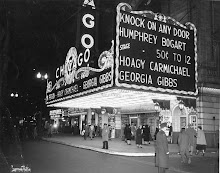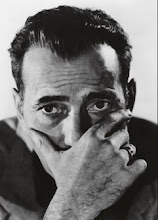As Oscar winners go, THE BROADWAY MELODY is not one of the immortals.
The production values are primitive, the acting stilted, and the direction pedestrian at best.
From today's vantage point it can seem puzzling if not downright nonsensical that the infant Academy of Motion Picture Arts and Sciences chose to bestow the Oscar for Outstanding Picture of 1929 on such a creaky production.
But dig a little deeper into the history of the Hollywood film industry in the late 1920s and the award starts to make more sense.
THE BROADWAY MELODY was released in June 1929, a little more than 18 months after the first official talkie "The Jazz Singer" had caused a sensation at the box office. But that sensation had not translated into an overnight switch to sound by the Hollywood studios. Many in the industry remained skeptical about sound's long term future and those studios that were starting to shoot their films in sound and vision were still struggling to get to grips with the new medium.
That uncertainty about how to incorporate sound into the pictures, and the limitations imposed by the new recording equipment, are both evident in every scene of THE BROADWAY MELODY.
The film's "putting on a musical show" storyline (one that Warner Bros were to perfect in the 1930s with their marvelous series of Busby Berkeley musicals), necessarily featured a lot of musical numbers with much singing and dancing. But while the dancers tapdanced their way across the stage from side to side and back to front the camera remains static. It fails to mimic the movement it's photographing, resulting in dancers disappearing out of frame to be replaced by empty stage. There's very little cutting between long shots and medium close-ups, and the impression is of a flat, filmed stage musical shot head on. The technology had no yet caught up with the uses it was being put to.
These limitations are glaringly obvious to sophisticated modern cinema-goers but to film fans in 1929 THE BROADWAY MELODY must have appeared to be at the cutting edge of mass entertainment. MGM's first full length all-talking picture was the top grossing film of 1929 and spawned a series of sequels stretching to 1940.
In this light it's possible to interpret the bestowing of the best picture Oscar as a reward to one of Hollywood's biggest players for overcoming their doubts about sound and proving it had a viable future.
But THE BROADWAY MELODY is not only a snapshot of a major industry in transition it's also a fascinating reminder of how cultural attitudes changed over the course of the 20th century toward what constituted the ideal female form. The film is awash with showgirls, high kicking and tap dancing their way across rehearsal halls and Broadway stages in a variety of revealing costumes. They all - without exception - have legs of a size more commonly found today holding up rugby players. These ladies are solid rather than shapely and that - judging by the leering expressions on the faces of the wealthy backers of the show - was exactly what was required to ring a gentleman's chimes in the 1920s.
The film's star, Anita Page, is an excellent example of this. Nicknamed "The Girl With the Most Beautiful Face in Hollywood" it sat a-top a body that would best be described today as 'husky.' 'Hunger Games' star Jennifer Lawrence looks decidedly skinny standing next to Miss Page.
While THE BROADWAY MELODY may be found wanting as a piece of entertainment by today's audiences, it remains infinitely rewarding as a window on a moment in history when the world's most powerful entertainment medium was struggling to find its feet with a new technology that we can't now imagine being without.
16 January 2013
Subscribe to:
Post Comments (Atom)




No comments:
Post a Comment